Genchem Chapter 10 PDF

| Title | Genchem Chapter 10 |
|---|---|
| Author | Emily Lubas |
| Course | General Chemistry I |
| Institution | The University of Tampa |
| Pages | 8 |
| File Size | 517 KB |
| File Type | |
| Total Downloads | 99 |
| Total Views | 127 |
Summary
Chemical Bonding...
Description
Chapter 10 : Chemical Bonding I Chemical Bonding - Chemical bond - Holds atoms together - Lower energy (stable) -
-
Electrons on each atom - Feel (+) of other nucleus - New orbitals (allowed states) - Electron near both nuclei -
lower s total energy - Bond energy
-
Most stable configuration - Full octet (octet rule) - 8 electrons, full s and p orbitals of valence level
How
Covalent Bonds -
Atoms share electrons - Octet (valence) Covalent bond - Bond (total energy decreases) with sharing - Orbitals (wave functions)
-
-
NB: covalent bond
- Shared electrons “count” for both atoms - Electrons: pairs Two types - Equal sharing (non polar)
- Unequal sharing (polar) Bond Polarity in Chemical Bonds
-
Nonpolar covalent bond - Electrons shared equally Polar covalent bond - Electrons shared unequally
-
Ionic bond - Electrons transferred Electronegativity - Attraction for shared electrons -
Property of each element
-
-
-
Number (EN): polar character of atom’s bonds
Electronegativity - Polar vs nonpolar - the difference in EN of 2 atoms - Type of bond
Normally need only TRENDS in EN to solve problems
-
Metal - nonmetal (Na, Cl) - Ionic - Unlike nonmetals (C, O) - Polar covalent - Identical nonmetals (N, N in N2) - Nonpolar covalent Dipoles in polar covalent bonds -
Dipole - Two equal, opposite charges separated by a distance Dipole moment (magnitude of dipole) - Two equal (opposite) charges Q separated R has dipole - μ = Qr
-
Dipole moment - Amount of (+/-) separation
-
Dipole moment arrow
-
- Direction of dipole moment - Points to negative end of bond Dipole moment - Vector quantity, both magnitude and direction
Lewis Structures: drawings that show bonding in molecules - Bonding - Covalent molecules - Atoms share electrons : octet (duet for H) - Shared electrons count: both atoms
-
-
Lewis structure - Diagram (electron dot notation) - Valence electron arrangement - How many bonds - Number of valence electrons needed for octet Valence (outer shell) electrons - Electrons in highest occupied energy level - Generally s and p electrons only
-
-
Filled s and p valence shell by sharing electrons Main group number - Valence electrons
To draw a proper lewis structure - 1) add up valence electrons of all atoms, arrange in pairs -
2) draw a skeletal structure by using pairs of electrons to make bonds - Guidelines for connectivity of atoms in molecules - Minority atom in center, majority atoms on sides - LEAST electronegative atom in center - H - atoms always on sides, never center - Hydrocarbons (C and H) - C atoms center, H atoms outside
- 3) complete octets (duets for H) for all atoms, outer atoms first, using the remaining valence electrons as lone pairs - 4) if octets are not produced, have atoms with octets share more electron pairs with atoms without octets Lewis Structures for Polyatomic Ions -
Must include ion’s charge in total count of electrons -
-
Resonance structures
-
Resonance - Multiple equivalent structures ( resonance structures) Real structure - Average of all resonance structures Real O3 molecule - A single structure, average of its resonance structures (NOT two separate structures)
Formal charge in covalent bonds -
-
Formal charge: “net charge” atom (gained/lost valence electrons) Difference: (starting electrons) - (final electrons) - Each bonding electron - Half its charge to each atom (shared equally) Starting electrons = valence electrons Lewis structure - Electrons assigned to atom - All lone pair electrons (2 per pair) - One electron for each covalent bond (2 x ½) - If starting does not equal final - Atom has acquired a net charge - Formal charge
Lewis structures and formal charges - Dominant lewis structure - Formal charges closest to zero - Negative formal charge on most electronegative atom Ionic Bonds - Metal and nonmetal
-
- metals : lose electrons (+ ions) - Nonmetals : gain electrons (- ions) Ionic bond - Attraction between (+) and (-) The octet rule : ionic compounds -
Atoms >>> ions : octet of valence electrons
Ionic Compounds properties
-
Lattice energy
-
ΔHLat : binding energy of compound => Properties (melting) ΔHLat depends on: - 1) Ion’s sizes - smaller => closer together => lower energy (greater ΔHLat)
-
ΔHLat depends on:
- Ions’ charge: greater charge => greater attraction => greater ΔHLat Resonance structures
-
Resonance - Multiple equivalent structures Real structure - Average of all resonance structures Real 03 molecule - A single structure, average of its resonance structures (NOT two separate structures)
Exceptions to the octet rule - Three cases - Odd number electrons - Important molecules with odd number of electrons - Very reactive
-
Less than octet -
-
2nd row before carbon (b, be) - Compounds with < 8 electrons on central atom Bf3: - Boron with fill octet > negative formal on B, positive on F
>> 8 valence electrons (expanded octet) - Row 3 or higher: - > 8 electrons in valence shell - Can use d-orbitals to make more than four bonds - Important cases - 1) row 3+ central atom in oxides/anions reduce their formal charge - Form more bonds with their O atoms - Examples: PO43- , SO4 2- , ClO4- - 2) Heavy atom (row 3+) halides (especially Fluorides) - NB: -
Covalent bond Strength -
Energy to break a bond - Bond enthalpy For Cl—Cl, D(Cl—Cl), = 242 kJ/mole: Cl—Cl → 2 Cl• ΔH = +242 kJ/mole Positive, energy input (endothermic).
Only period 3 and higher Never period 2 (C, N, O, F)
Lewis Structure of Carbon Monoxide - Valence electrons - 4+6=10 > 5 pairs, 4 pairs - Formal charges
Using Bond enthalpies to estimate enthalpy of reaction -
Estimate DHrxn: D(bonds broken) and D(bonds formed): - => DHrxn = S(D(broken)) − S(D(formed)). - Example: Calculate ΔHrxn for this reaction using bond enthalpies
Condensed Structural formula notation
Bond Enthalpy and bond length - Measured average bond length for different bond types -
Number of bonds (bond order) increases > bond length decreases
-
-
The higher the bond order (triple > double > single) - The shorter the bond length - The stronger the bond
...
Similar Free PDFs

Genchem Chapter 10
- 8 Pages

Chapter 10 quiz #10
- 3 Pages

Notes 10 - Chapter 10
- 5 Pages
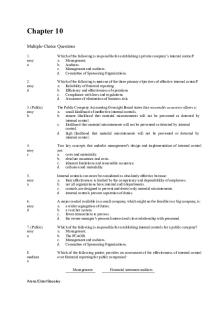
Chapter-10
- 19 Pages
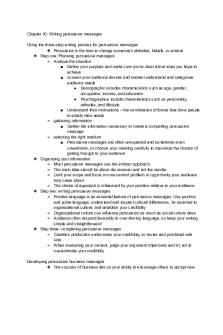
Chapter 10
- 5 Pages
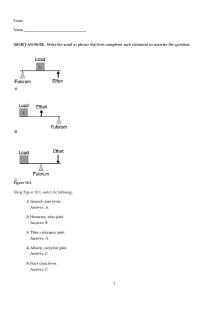
Chapter 10
- 14 Pages

Chapter 10
- 111 Pages
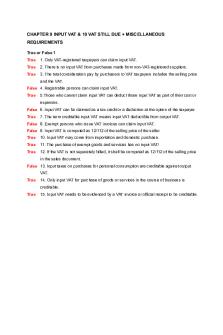
Chapter 10
- 16 Pages
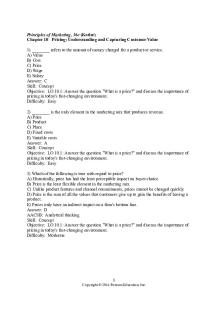
Chapter 10
- 47 Pages
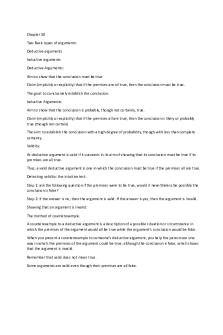
Chapter 10
- 4 Pages
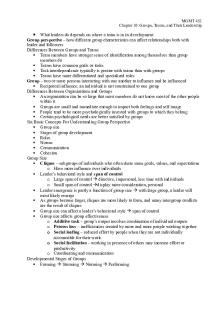
Chapter 10
- 5 Pages
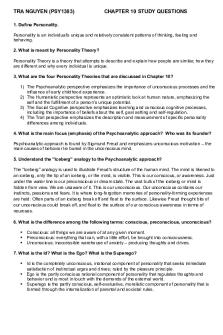
Chapter 10
- 6 Pages

Chapter 10
- 13 Pages

Chapter 10
- 10 Pages
Popular Institutions
- Tinajero National High School - Annex
- Politeknik Caltex Riau
- Yokohama City University
- SGT University
- University of Al-Qadisiyah
- Divine Word College of Vigan
- Techniek College Rotterdam
- Universidade de Santiago
- Universiti Teknologi MARA Cawangan Johor Kampus Pasir Gudang
- Poltekkes Kemenkes Yogyakarta
- Baguio City National High School
- Colegio san marcos
- preparatoria uno
- Centro de Bachillerato Tecnológico Industrial y de Servicios No. 107
- Dalian Maritime University
- Quang Trung Secondary School
- Colegio Tecnológico en Informática
- Corporación Regional de Educación Superior
- Grupo CEDVA
- Dar Al Uloom University
- Centro de Estudios Preuniversitarios de la Universidad Nacional de Ingeniería
- 上智大学
- Aakash International School, Nuna Majara
- San Felipe Neri Catholic School
- Kang Chiao International School - New Taipei City
- Misamis Occidental National High School
- Institución Educativa Escuela Normal Juan Ladrilleros
- Kolehiyo ng Pantukan
- Batanes State College
- Instituto Continental
- Sekolah Menengah Kejuruan Kesehatan Kaltara (Tarakan)
- Colegio de La Inmaculada Concepcion - Cebu

